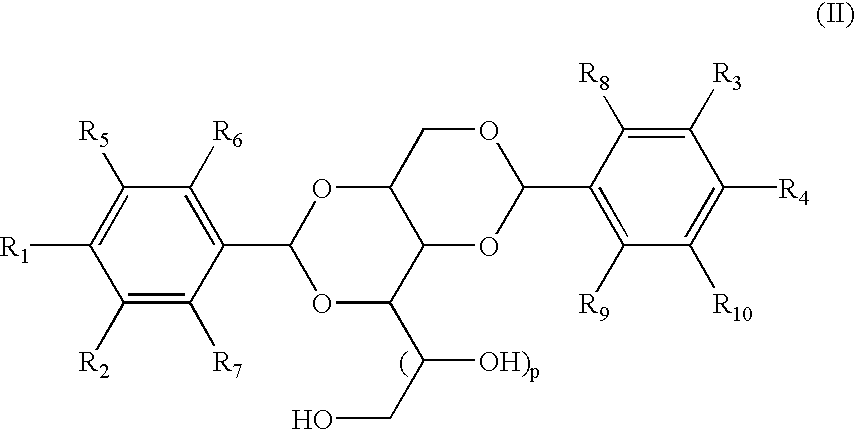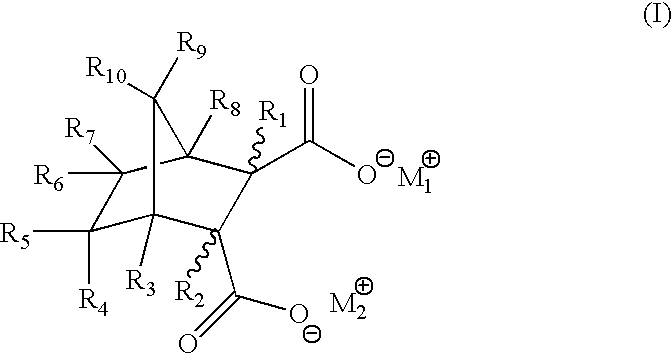Clarified thermoplastics exhibiting very high nucleation efficacy
a thermoplastic and nucleation technology, applied in the field of thermoplastics, can solve the problems of not providing effective clarification measurements, no real alternatives, and the clarity characteristics of resultant formulations with such blends are much worse than those of dbss
- Summary
- Abstract
- Description
- Claims
- Application Information
AI Technical Summary
Problems solved by technology
Method used
Image
Examples
example 1
Disodium bicyclo[2.2.1]heptane-2, 3-dicarboxylate
To a solution of disodium bicyclo[2.2.1]heptene-2,3-dicarboxylate (10.0 g) in water (100 g) was added 0.5 g palladium on activated carbon (5 wt %). The mixture was transferred into a Parr reactor and was subjected to hydrogenation (50 psi, room temperature) for 8 hours. The activated carbon was filtered out. Water is removed in vacuo at 75.degree. C. The resulting product was dried and milled (m.p>300.degree. C.).
PUM
| Property | Measurement | Unit |
|---|---|---|
| flexural modulus | aaaaa | aaaaa |
| flexural modulus | aaaaa | aaaaa |
| elongation at yield | aaaaa | aaaaa |
Abstract
Description
Claims
Application Information
 Login to View More
Login to View More - R&D
- Intellectual Property
- Life Sciences
- Materials
- Tech Scout
- Unparalleled Data Quality
- Higher Quality Content
- 60% Fewer Hallucinations
Browse by: Latest US Patents, China's latest patents, Technical Efficacy Thesaurus, Application Domain, Technology Topic, Popular Technical Reports.
© 2025 PatSnap. All rights reserved.Legal|Privacy policy|Modern Slavery Act Transparency Statement|Sitemap|About US| Contact US: help@patsnap.com



